We practice a minimally invasive approach to your foot or ankle problem with surgery as the last option
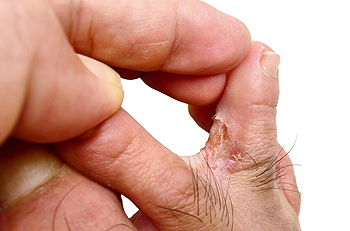
Athlete's foot, a common fungal infection, can typically be recognized by a variety of telltale symptoms. It often starts with intense itching and burning sensations between the toes or on the soles of the feet. As the infection progresses, the affected skin may become red, cracked, and blistered. In severe cases, it can cause the infected skin to peel or become excessively dry. Recognizing these symptoms is important for timely intervention. Treatment generally involves antifungal creams, powders, or sprays that target the fungus responsible for the infection. Maintaining good foot hygiene, keeping the feet dry, and avoiding walking barefoot in communal areas can aid in both treatment and prevention. Understanding and addressing athlete's foot promptly can bring relief and restore foot health. If you have developed a stubborn case athlete’s foot, it is suggested that you visit a podiatrist who can prescribe advanced medication and offer permanent treatment solutions.
Athlete’s foot is an inconvenient condition that can be easily reduced with the proper treatment. If you have any concerns about your feet and ankles, contact Dr. David Ungar from Personal Foot Care. Our doctor will treat your foot and ankle needs.
Athlete’s Foot: The Sole Story
Athlete's foot, also known as tinea pedis, can be an extremely contagious foot infection. It is commonly contracted in public changing areas and bathrooms, dormitory style living quarters, around locker rooms and public swimming pools, or anywhere your feet often come into contact with other people.
Solutions to Combat Athlete’s Foot
Athlete’s foot can cause many irritating symptoms such as dry and flaking skin, itching, and redness. Some more severe symptoms can include bleeding and cracked skin, intense itching and burning, and even pain when walking. In the worst cases, Athlete’s foot can cause blistering as well. Speak to your podiatrist for a better understanding of the different causes of Athlete’s foot, as well as help in determining which treatment options are best for you.
If you have any questions please feel free to contact our office located in Farmington, MI . We offer the newest diagnostic and treatment technologies for all your foot and ankle needs.
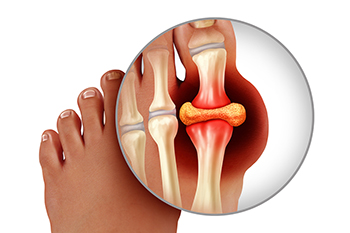
Gout, a complex form of arthritis, is often accompanied by intense pain and inflammation that targets the joints, including the feet. This condition results from the accumulation of uric acid crystals in the joints, leading to sudden and excruciating attacks of pain. The underlying cause is often an overproduction or inefficient excretion of uric acid, which is a waste product. Dietary factors, such as high purine foods and excessive alcohol consumption, can exacerbate gout. Managing gout involves implementing various treatment methods. Medications may help to reduce pain and inflammation during attacks, while long term strategies focus on lowering uric acid levels. This can be accomplished through lifestyle adjustments and prescribed medications. Consulting a podiatrist is paramount in tailoring an effective treatment plan. If you are afflicted with gout, it is strongly suggested that you are under the care of this type of doctor who can effectively help you to manage this condition.
Gout is a foot condition that requires certain treatment and care. If you are seeking treatment, contact Dr. David Ungar from Personal Foot Care. Our doctor will treat your foot and ankle needs.
What Is Gout?
Gout is a type of arthritis caused by a buildup of uric acid in the bloodstream. It often develops in the foot, especially the big toe area, although it can manifest in other parts of the body as well. Gout can make walking and standing very painful and is especially common in diabetics and the obese.
People typically get gout because of a poor diet. Genetic predisposition is also a factor. The children of parents who have had gout frequently have a chance of developing it themselves.
Gout can easily be identified by redness and inflammation of the big toe and the surrounding areas of the foot. Other symptoms include extreme fatigue, joint pain, and running high fevers. Sometimes corticosteroid drugs can be prescribed to treat gout, but the best way to combat this disease is to get more exercise and eat a better diet.
If you have any questions please feel free to contact our office located in Farmington, MI . We offer the newest diagnostic and treatment technologies for all your foot and ankle needs.
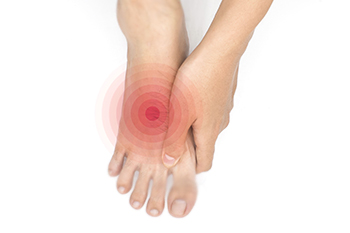
Diabetes is a serious medical condition that can affect the nerves in the feet. Many diabetic patients develop neuropathy, which is the inability to feel cuts and scrapes that have developed on the feet. This can lead to getting infections and foot ulcers, both of which need immediate medical attention. Proper diabetic foot care begins with washing and drying the feet daily, followed by inspecting the soles of the feet for any abrasions. Many people choose to use a mirror to do this, or to ask a family member or caregiver to help them accomplish this. Additionally, it is beneficial for the toenails to be trimmed weekly. It is wise to stop smoking, if applicable, which may help to increase blood flow to the feet. Many diabetic patients know the importance of wearing shoes at all times, which can help to prevent stepping on objects that can damage the skin. If you have diabetes, it is strongly suggested that you are under the care of a podiatrist who can help you to manage this condition.
Diabetic foot care is important in preventing foot ailments such as ulcers. If you are suffering from diabetes or have any other concerns about your feet, contact Dr. David Ungar from Personal Foot Care. Our doctor can provide the care you need to keep you pain-free and on your feet.
Diabetic Foot Care
Diabetes affects millions of people every year. The condition can damage blood vessels in many parts of the body, especially the feet. Because of this, taking care of your feet is essential if you have diabetes, and having a podiatrist help monitor your foot health is highly recommended.
The Importance of Caring for Your Feet
Patients with diabetes should have their doctor monitor their blood levels, as blood sugar levels play such a huge role in diabetic care. Monitoring these levels on a regular basis is highly advised.
It is always best to inform your healthcare professional of any concerns you may have regarding your feet, especially for diabetic patients. Early treatment and routine foot examinations are keys to maintaining proper health, especially because severe complications can arise if proper treatment is not applied.
If you have any questions please feel free to contact our office located in Farmington, MI . We offer the newest diagnostic and treatment technologies for all your foot and ankle needs.
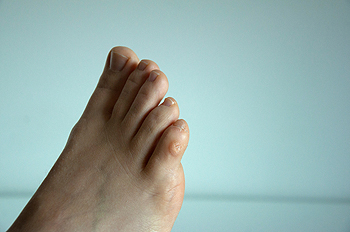
Having a corn on the foot can become quite painful, but luckily is easy to prevent. A foot corn is a thickening of the skin on the toes or on the bottom of the foot. It is usually the result of excessive pressure on the skin, often caused by improperly fitting shoes. While a corn itself is not painful, when it rubs against a nerve or bone in the toe or foot, it can become irritated and inflamed. Besides wearing shoes that are too tight, other causes of corns are seams in the shoes, hammertoes, bunions, and gait abnormalities. The most effective way to prevent corns is to change the type of footwear you buy. Once a corn has developed, finding ways to ease the pressure while wearing shoes is paramount. Shoes with ample room for the toes to move in and wearing corn pads can be effective in accomplishing this. Patients who have foot deformities may wish to investigate the benefits of having custom orthotics made that may help to prevent the ongoing formation of corns. For more information on managing corns on the feet, it is suggested that you visit a podiatrist.
Corns can make walking very painful and should be treated immediately. If you have questions regarding your feet and ankles, contact Dr. David Ungar of Personal Foot Care. Our doctor will treat your foot and ankle needs.
Corns: What Are They? And How Do You Get Rid of Them?
Corns are thickened areas on the skin that can become painful. They are caused by excessive pressure and friction on the skin. Corns press into the deeper layers of the skin and are usually round in shape.
Ways to Prevent Corns
There are many ways to get rid of painful corns such as:
Treating Corns
Although most corns slowly disappear when the friction or pressure stops, this isn’t always the case. Consult with your podiatrist to determine the best treatment option for your case of corns.
If you have any questions please feel free to contact our office located in Farmington, MI . We offer the newest diagnostic and treatment technologies for all your foot and ankle needs.
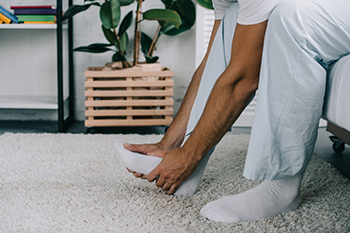
Having persistent foot conditions may indicate there may be issues with overall health. Foot cramps can be a sign of dehydration, and may be remedied by drinking plenty of water. Morton’s neuroma can cause a tingling or burning sensation between the third and fourth toes and can happen from wearing shoes that do not have enough room for the toes to move freely in. Flakey skin may be a symptom of athlete's foot, which is caused by a fungal infection. Some patients have consistently cold feet, despite warm socks that are worn. This could mean there are circulatory issues, and it may be accompanied by fatigue. If you have foot pain for any reason, it is strongly suggested that you consult with a podiatrist who can provide treatment, in addition to determining if the foot pain represents an underlying health condition.
Foot Pain
Foot pain can be extremely painful and debilitating. If you have a foot pain, consult with Dr. David Ungar from Personal Foot Care. Our doctor will assess your condition and provide you with quality foot and ankle treatment.
Causes
Foot pain is a very broad condition that could be caused by one or more ailments. The most common include:
Diagnosis
To figure out the cause of foot pain, podiatrists utilize several different methods. This can range from simple visual inspections and sensation tests to X-rays and MRI scans. Prior medical history, family medical history, and any recent physical traumatic events will all be taken into consideration for a proper diagnosis.
Treatment
Treatment depends upon the cause of the foot pain. Whether it is resting, staying off the foot, or having surgery; podiatrists have a number of treatment options available for foot pain.
If you have any questions, please feel free to contact our office located in Farmington, MI . We offer the newest diagnostic and treatment technologies for all your foot care needs.
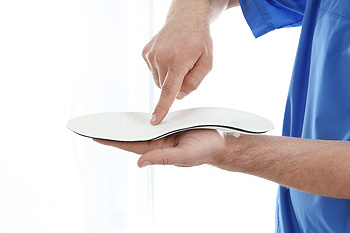
Many people familiar with podiatry might already know what orthotics are. These custom-made or over-the-counter foot devices are essentially shoe inserts. They can be used to correct foot deformities, facilitate healing, or simply provide extra support. Senior adults are a particular group of individuals that might especially benefit from the use of orthotic devices. The reason for this is simple. Ultimately, using certain orthotic devices as a senior can actually improve one’s sense of balance and stability. This can be very useful and beneficial concerning how dangerous suffering from falls can be for seniors. Balance-inducing orthotic devices can help seniors mitigate the effects of muscle weakness, joint instability, and gait abnormalities. If you are a senior or are caring for one, it is suggested that you schedule an appointment with a podiatrist today to discuss the potential benefits of orthotic devices.
If you are having discomfort in your feet and would like to try orthotics, contact Dr. David Ungar from Personal Foot Care. Our doctor can provide the care you need to keep you pain-free and on your feet.
What Are Orthotics?
Orthotics are inserts you can place into your shoes to help with a variety of foot problems such as flat feet or foot pain. Orthotics provide relief and comfort for minor foot and heel pain but can’t correct serious biomechanical problems in your feet.
Over-the-Counter Inserts
Orthotics come in a wide variety of over-the-counter inserts that are used to treat foot pain, heel pain, and minor problems. For example, arch supports can be inserted into your shoes to help correct overarched or flat feet, while gel insoles are often used because they provide comfort and relief from foot and heel pain by alleviating pressure.
Prescription Orthotics
If over-the-counter inserts don’t work for you or if you have a more severe foot concern, it is possible to have your podiatrist prescribe custom orthotics. These high-quality inserts are designed to treat problems such as abnormal motion, plantar fasciitis, and severe forms of heel pain. They can even be used to help patients suffering from diabetes by treating foot ulcers and painful calluses and are usually molded to your feet individually, which allows them to provide full support and comfort.
If you are experiencing minor to severe foot or heel pain, it’s recommended to speak with your podiatrist about the possibilities of using orthotics. A podiatrist can determine which type of orthotic is right for you and allow you to take the first steps towards being pain-free.
If you have any questions please contact our office located in Farmington, MI . We offer the newest diagnostic and treatment technologies for all your foot and ankle needs.
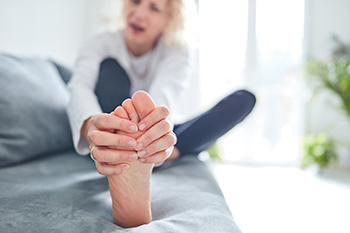
Many people take their feet for granted until they begin to hurt. The feet are the foundation and carry the entire weight of the body, making it possible to walk, run, and jump. Having foot cramps can wreak havoc on the day. They can cause pain and discomfort, and it may be difficult to walk. A common reason why foot cramps may happen from wearing shoes that are too tight. This may cause limited movement in the feet, possibly leading to foot and muscle cramps. Dehydration may be another reason why foot cramps may occur. Lack of water may cause the muscles to malfunction, and this may also result in foot cramps. This type of foot pain may be avoided when a routine stretching and exercise regime is practiced. Strong foot muscles help to keep the body balanced, and it is beneficial to avoid overstretching, which may lead to foot fatigue. If you have foot cramps, it is suggested that you consult with a podiatrist who can determine the cause and offer you the correct relief options.
Foot Pain
Foot pain can be extremely painful and debilitating. If you have a foot pain, consult with Dr. David Ungar from Personal Foot Care. Our doctor will assess your condition and provide you with quality foot and ankle treatment.
Causes
Foot pain is a very broad condition that could be caused by one or more ailments. The most common include:
Diagnosis
To figure out the cause of foot pain, podiatrists utilize several different methods. This can range from simple visual inspections and sensation tests to X-rays and MRI scans. Prior medical history, family medical history, and any recent physical traumatic events will all be taken into consideration for a proper diagnosis.
Treatment
Treatment depends upon the cause of the foot pain. Whether it is resting, staying off the foot, or having surgery; podiatrists have a number of treatment options available for foot pain.
If you have any questions, please feel free to contact our office located in Farmington, MI . We offer the newest diagnostic and treatment technologies for all your foot care needs.
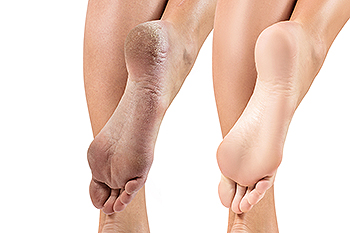
The main reason why cracked heels develop is a lack of moisture in the skin. It can happen for various reasons, consisting of standing on hard surfaces for most of the day and wearing shoes with an open back. Medical conditions such as dermatitis, eczema, psoriasis, or a thyroid disorder regularly have the symptom of cracked heels. Cracked heels can be unsightly and may develop into a serious foot condition if left untreated. The cracks can deepen and bleed, and these are known as fissures. One of the first signs this condition may be developing is thick skin on the edges of the heels. Temporary relief may be found when the feet are soaked in warm water, followed by applying a good moisturizer. Additionally, a pumice stone can be used to remove a portion of the thickened skin, and it may help to wear appropriate shoes that can provide adequate heel support. If you have developed cracked heels, it is suggested that you consult with a podiatrist who can offer you permanent relief, which may come from prescribed medicine.
If the skin on your feet starts to crack, you may want to see a podiatrist to find treatment. If you have any concerns, contact Dr. David Ungar from Personal Foot Care. Our doctor can provide the care you need to keep you pain-free and on your feet.
Cracked Heels
It is important to moisturize your cracked heels in order to prevent pain, bleeding, and infection. The reason cracked heels form is because the skin on the foot is too dry to support the immense pressure placed on them. When the foot expands, the dry skin on the foot begins to split.
Ways to Help Heal Them
Ways to Prevent Cracked Heels
If you are unsure how to proceed in treating cracked heels, seek guidance from a podiatrist. Your doctor will help you with any questions or information you may need.
If you have any questions, please feel free to contact our office located in Farmington, MI . We offer the newest diagnostic and treatment technologies for all your foot care needs.
Cracked heels may make you want to think twice about showing off your feet in warmer weather. However, cracked heels may be harmful to more than just the appearance of your feet. If deep fissures and cracks develop in your heels, they may make walking and standing painful for you. Additionally, these openings make way for germs to enter through your skin and cause infection.
There are several different causes of cracked heels. One of the most common reasons for this ailment is dry skin. This problem may make your keeps feel rough tight and itchy. Dry skin may be caused by cold air, extremely hot water, harsh soaps, and aging. Skin disorders such as eczema and psoriasis may eventually lead to dry skin. In some cases, complications may arise from cracked heels. Some of these complications are a loss of feeling in the heel, cellulitis, or a diabetic foot ulcer.
There are ways you can try to prevent getting cracked heels. One of the best ways to do so is to avoid wearing flip flops and sandals because these shoes increase your risk of drying out your feet. You should also avoid wearing shoes with a tall skinny heel, because these shoes cause your heel to expand sideways. At night, you should slather on a thick moisturizing cream on your feet and then cover them in socks to keep your feet moisturized overnight. Drinking water to stay hydrated is also a good way to ensure that your skin doesn’t become dry.
If you suffer from a severe case of cracked feet, you should make an appointment with your podiatrist to see what treatment methods are best for you.
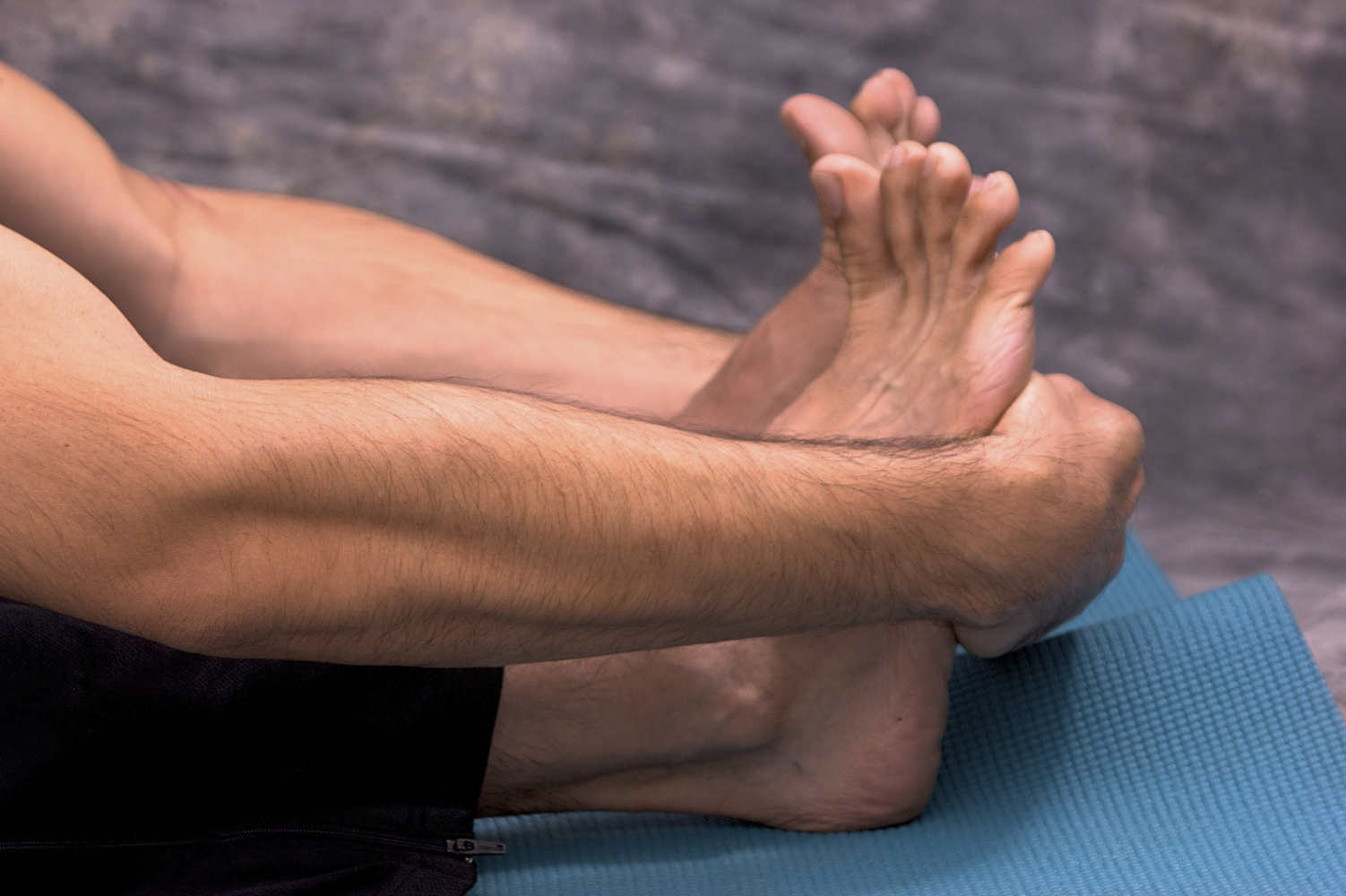
It is common for some individuals to wake up in the morning with some degree of foot pain. This can be significantly annoying for those who experience morning foot pain or soreness. There are several things that an individual might consider to address morning foot pain. For example, they might perform certain foot stretches to combat this pain. By performing certain gentle stretches in the morning, a patient may be able to potentially alleviate soreness, aches, and even moderate foot pain. These stretches can target different parts of the foot, such as the ankle, heel, arch, and toes. If you are someone that is prone to developing foot pain in the morning time, then it is suggested that you schedule an appointment with a podiatrist to address these issues.
Stretching the feet is a great way to prevent injuries. If you have any concerns with your feet consult with Dr. David Ungar from Personal Foot Care. Our doctor will assess your condition and provide you with quality foot and ankle treatment.
Stretching the Feet
Being the backbone of the body, the feet carry your entire weight and can easily become overexerted, causing cramps and pain. As with any body part, stretching your feet can serve many benefits. From increasing flexibility to even providing some pain relief, be sure to give your feet a stretch from time to time. This is especially important for athletes or anyone performing aerobic exercises, but anyone experiencing foot pain or is on their feet constantly should also engage in this practice.
Great ways to stretch your feet:
Individuals who tend to their feet by regular stretching every day should be able to minimize foot pain and prevent new problems from arising.
If you have any questions, please feel free to contact our office located in Farmington, MI . We offer the newest diagnostic and treatment technologies for all your foot care needs.
Connect With Us
